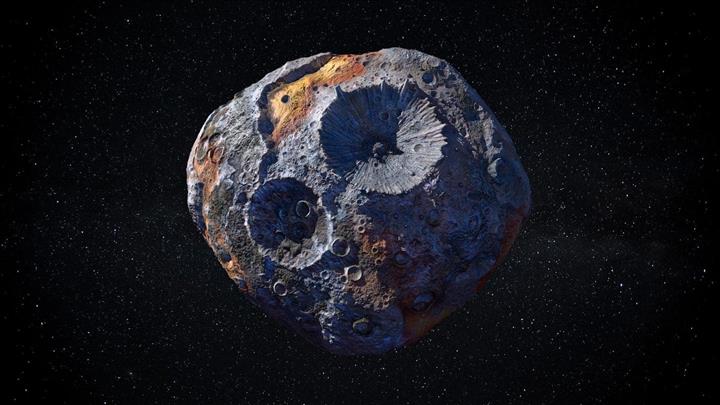
Asteroid larger than Pyramid of Giza to zoom by tomorrow
(MENAFN- NewsBytes) NASA might be planning to launch the Lucy spacecraft to investigate the Jupiter Trojan asteroid belt but few cosmic events come close to the one we are about to witness on Friday. Forty-eight hours before Lucy's launch, an asteroid larger than the Great Pyramid of Giza is expected to zoom past Earth. The asteroid is named 2021 SM3. Here are more details.
Classification The approaching asteroid is classified as a near-Earth object
Discovered last month, the 2021 SM3 is classified as a near-Earth object. NASA classifies objects as such if they have been "nudged" into orbits within 120 million miles (around 1.93 million kilometers) of Earth by the gravitational pull of nearby planets. According to NASA's Center for Near-Earth Object Studies, this asteroid's diameter is 525 feet, larger than the 482-foot tall Pyramid of Giza.
Zooming by Asteroid to fly by at 56,916 kilometers per hourThe 2021 SM3 would fly past Earth with a separation of around 3.6 million miles (about 5.8 million kilometers). Although it sounds like a safe distance, it is much closer than our nearest neighboring planet Venus located at a distance of 74.8 million miles (nearly 120 million kilometers). The asteroid would zip past Earth at a velocity of 56,916 kilometers per hour on Friday.
No threat 2021 SM3 will be followed by seven other similar-sized asteroidsNASA has specified there is no danger to earthlings from this passing asteroid. Additionally, 2021 SM3 isn't the only enormous asteroid passing by. Seven asteroids larger than 2021 SM3 will follow suit by the end of November. Of these, 1996 VB3, with a diameter of 754 feet, will come the closest to Earth at 2.1 million miles (around 3.4 million kilometers) on October 20.
Even bigger Largest asteroid of group to fly past on November 13
The largest asteroid to fly past Earth by November-end would be the 2004 UE, on November 13, with a diameter of 1,246 feet, just a few feet shy of the Empire State Building's height. According to NASA, scientists believe stray asteroids and fragments that crashed into Earth in the past have played a major role in our planet's evolution.

Legal Disclaimer:
MENAFN provides the
information “as is” without warranty of any kind. We do not accept
any responsibility or liability for the accuracy, content, images,
videos, licenses, completeness, legality, or reliability of the information
contained in this article. If you have any complaints or copyright
issues related to this article, kindly contact the provider above.

















Comments
No comment